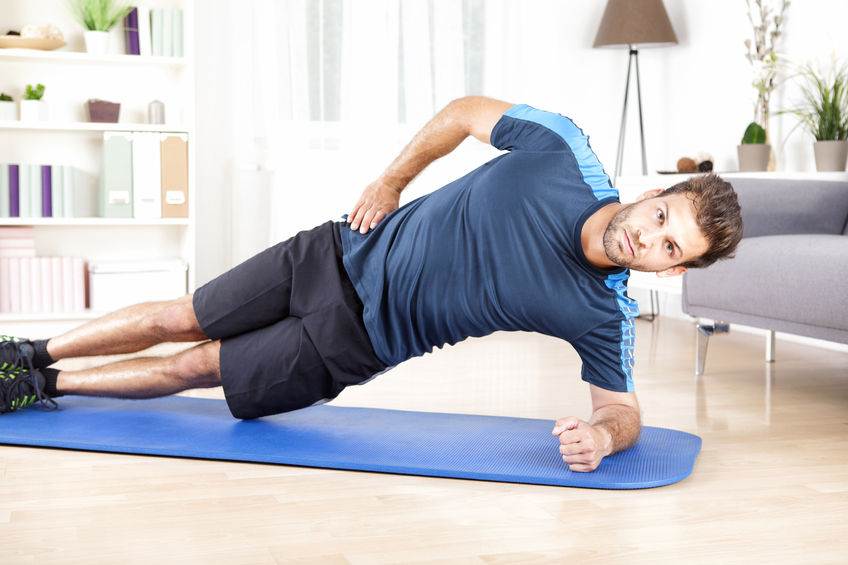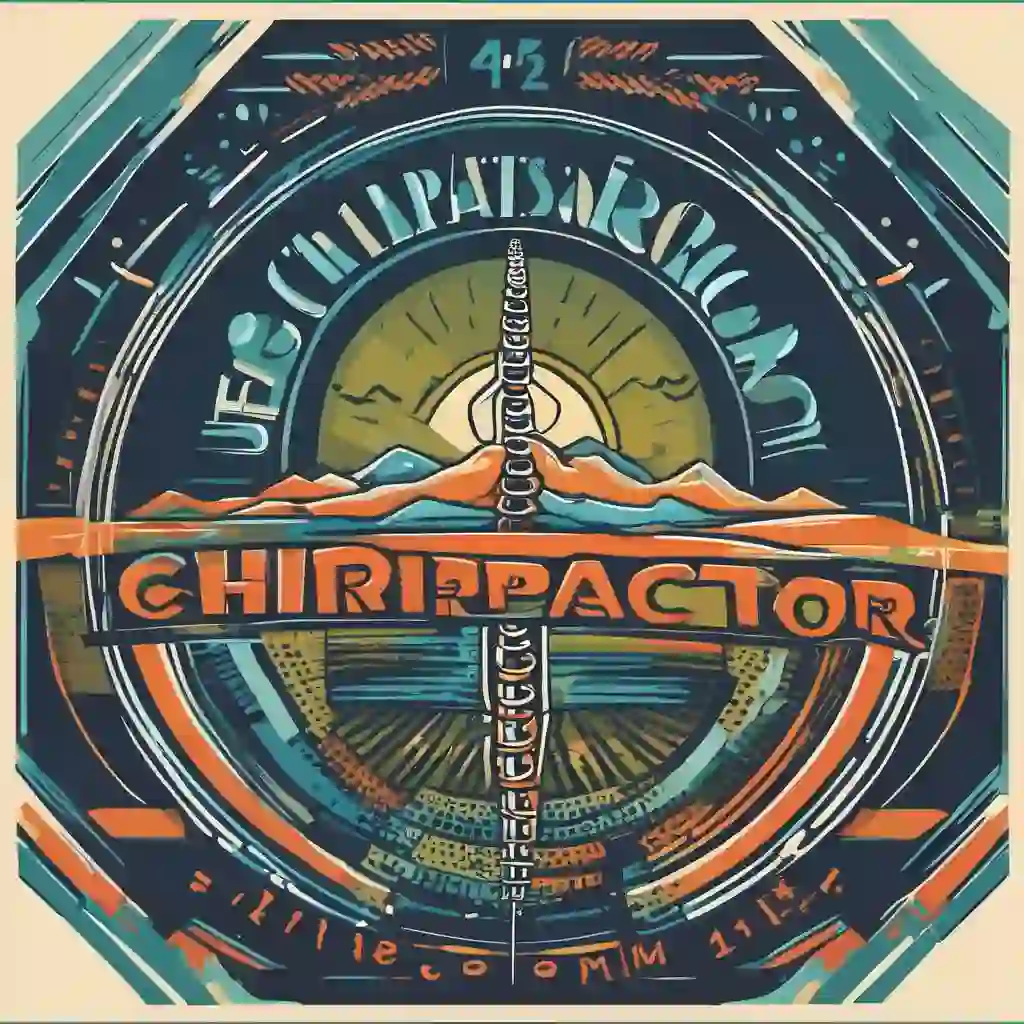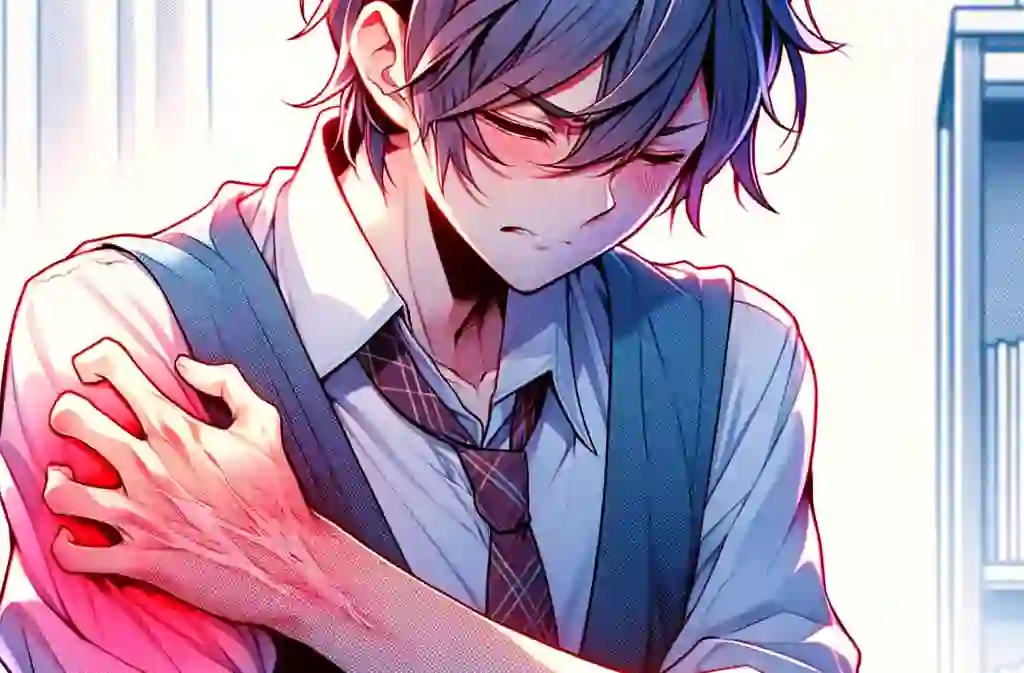Exercise Remedies For Chronic Low Back Pain

Do you have chronic lower back pain?
Have you tried chiropractic, physiotherapy, and massage therapy with temporary relief or no relief at all? You might need a second opinion or you just might need the right exercises.
In this issue of Bodi Empowerment, I give you some evidence-based exercises for chronic lower back pain and explain to you some of the reasons why you’ve had this lower back pain for so long.
Stability For Chronic Lower Back Pain
Contrary to what you might think a flexible spine is not a good way to avoid chronic lower back pain. If you are flexible like a dancer or a gymnast chances are you will likely have more lower back later on [1]. The muscles of the lower back including the rest of the core are there for stability. Stability, in this case, refers to less movement.
It’s safer for the body to keep the movements in the lower back limited. Too much movement and you start aggravating your discs and spinal joints leading to osteoarthritis. Too little movement leads to muscle stiffness, unnatural spinal vertebrae movements and eventually osteoarthritis. What should you do then?
Building strength is essential, but placing a greater emphasis on stability and endurance is crucial for preventing lower back pain. Interestingly, individuals with exceptionally strong backs may still experience chronic lower back pain if their focus on stability and endurance is inadequate. (Refer to the stability exercises provided below for effective training.)
Reasons For Chronic Lower Back Pain
- Lack of lower back stability and endurance
- Lifting improperly: If you want to lift properly see this article. Lifting Techniques: Weight Lifters vs Chiropractors’ Back Safety Lifting Techniques
- Posture: If you have a slouched posture this indicates that you likely don’t have the stability and endurance to hold your spine up. Yes, you literally can’t hold yourself up enough to prevent your pain. See this article Posture: Correct The Exaggerated Arch in Your Lower Back With These Posture Exercises.
- Psychology: It’s very well established through the research that chronic lower back pain is affected by how you think. I explain all these factors in detail later on.
Chronic Lower Back Pain Supports & Belts
The 1994 National Institute for Occupational Safety and Health (NIOSH) “Workplace Use of Back Belts” concluded that:
- Those who have never had a previous back injury have no additional protective benefit from wearing a belt.
- Those who were injured while wearing a belt risk a more severe injury than if belts were not worn.
- Belts change the lifting style of people to either decrease loads or increase loads for others.
- Increased cardiovascular risk due to increased diastolic blood pressure and heart rate, and linked to varicose veins in the testicles, haemorrhoids and hernias.
- Belts should not be utilized for long-term use. It is advisable to gradually reduce dependence on belts, as the period immediately following belt use cessation is when individuals are most susceptible to injury. Transitioning away from belt reliance should be a gradual process to minimize the risk of injury.
See Also: Low Back Support- The Definitive Guide To Low Back Belts
Recommendations: Chronic Lower Back Pain Supports & Belts
- Supports and belts for lower back pain are generally not recommended for healthy individuals. While they may provide temporary relief or support during specific activities, relying on them for extended periods can potentially weaken the core muscles and hinder natural stabilization mechanisms. It is advisable to focus on strengthening the core muscles through targeted exercises and maintaining a healthy lifestyle to prevent and manage lower back pain effectively.
- Supports and belts for chronic lower back are recommended temporarily for injured work returning to work.
Chronic Low Back Pain & Your Psychology
If you identify with any of these factors then you have a greater chance that your lower back pain will become a chronic lower back pain [2].
- The conviction that pain and activity are detrimental contributes to a self-limiting cycle. Individuals who harbour a fear of movement and exercise inadvertently inflict more harm upon themselves. Numerous studies emphasize that even in cases of the most intense chronic low back pain, extended bed rest provides little benefit, with recommendations discouraging it beyond two days [3].
- ‘Sickness Behaviors’ refers to adopting behaviours akin to those exhibited when experiencing an illness, such as the flu. This entails remaining in bed, experiencing lethargy, and refraining from engaging in routine activities around the house [4].
- Low, negative, or depressive moods play a significant role in the transition from acute low back pain to chronic low back pain. The higher the level of depression or negativity, the greater the likelihood of experiencing persistent low back pain. Individuals who grapple with depression often find themselves amplifying a minor lower back issue into a more substantial and enduring lower back disability.
- Engaging in treatment that deviates from established best practice guidelines or evidence-based care can hinder progress. An example of this is persistently seeking the same chiropractic or physiotherapy treatment without variation. A clear indication of suboptimal care is the absence of tailored exercises addressing your specific condition and body type.
- Involvement in claims, court cases, or seeking compensation can introduce complex psychological dynamics. When pursuing legal action or being on workers’ compensation, there is a potential psychological impact that may reinforce the idea of remaining unwell. Despite the legitimacy of your case, there can be a subconscious or conscious inclination for the body to perpetuate discomfort, influenced by the potential benefits associated with ongoing symptoms.
Work, Family and Your Previous History of Chronic Lower Back Pain
- A history of back pain, previous time off, or involvement in other claims can contribute to a cumulative impact on one’s well-being. Prior injuries and untreated pain can accumulate over time, particularly if evidence-based care and appropriate exercises are not provided. It is crucial to address and manage previous issues effectively to prevent a build-up of chronic discomfort. (Some recommended exercises are detailed below.
- Work-related problems and low job satisfaction can have a notable impact on lower back pain. An unhappy work environment can contribute to or exacerbate lower back pain, emphasizing the interconnected relationship between emotional well-being and physical health.
- Engaging in heavy work and working unsociable hours can have detrimental effects on the lower back, particularly impacting the discs and ligaments. The physical strain associated with heavy labour can contribute to damage and stress on the lower back structures.
- An overprotective family or a lack of support can significantly influence one’s mood and overall sense of happiness. These emotional factors may, in turn, contribute to or exacerbate issues related to lower back pain. A supportive and understanding social environment is crucial for holistic well-being.
Chronic Lower Back Pain Exercises
Some of these are the exercises recommended by the world-renowned Stuart McGill.
#1 Stir the Pot For Chronic Lower Back Pain

- Start by positioning your elbows directly under your shoulders, forming a right angle with your bent elbows.
- Assume a plank position on a Swiss ball, ensuring your body forms a straight line from head to heels.
- Beginners can place their feet apart for added stability, while those with a stronger core can bring their feet together.
- Engage your core muscles and initiate a circular motion with your elbows, resembling the act of stirring a pot.
- Perform this exercise for 30 to 60 seconds, focusing on controlled and deliberate movements.
This Swiss Ball Plank Stir targets your core muscles, promoting stability and strength. Adjust the difficulty by modifying your foot positioning based on your fitness level. Incorporate this exercise into your routine for a comprehensive core workout.
#2 Bird Dog For Chronic Low Back Pain

- Start as if you are in a crawling position with your hand under your shoulders and your knees under your hips.
- Tight your core, which means your lower back and ab muscles.
- Without twisting your spine raise up your right arm while raising up the opposite leg.
- Do the opposite on the other side.
- Do 3 sets of 10 repetitions. Doing each side counts as one repetition.
Intermediate Bird Dog: Make a fist and contract your whole upper limb. Draw 6 X 6-inch boxes or 15 cm X 15 cm boxes (approximately) in the air with your hand and foot.
Advanced Bird Dog: Raise the leg and arm on the same side.
#3 Side Plank Lift For Chronic Lower Back Pain

- Position your elbow directly under your shoulder for proper alignment.
- Straighten your legs and stack them on top of each other.
- Elevate your torso and legs, ensuring only your feet are in contact with the floor.
- Hold this side plank position for 30 seconds.
- Repeat the exercise three times for a comprehensive core workout.
The Side Plank Leg Lift targets the core muscles, particularly the obliques, enhancing stability and strength. Maintain proper form throughout the exercise to maximize its effectiveness. I
Tell us what you think in the comments below and like us on Facebook. This Toronto Downtown Chiropractor will answer all questions in the comments section.
Research
- Low Back Disorders: Evidence-Based Prevention and Rehabilitation Stuart McGill
- Ashby S, Richards K, James C. The effect of fear of movement on the lives of people with chronic low back pain… including commentary by Carleton RN, Poulain C, Meyer K, and Glombiewski JA. International Journal of Therapy & Rehabilitation [serial online]. May 2010;17(5):232-243. Available from CINAHL Plus with Full Text, Ipswich, MA. Accessed May 2, 2011.
- Hill J, Fritz J. Psychosocial Influences on Low Back Pain, Disability, and Response to Treatment. Physical Therapy. 2011;91 (5): 712-721. http://ptjournal.apta.org/cgi/content/extract/91/5/735 .
- Br J Gen Pract. 1997 Oct;47(423):647-52. Systematic reviews of bed rest and advice to stay active for acute low back pain. Waddell G1, Feder G, Lewis M.









Hello Doctor.
Thank you for all the information on back issues and exercises to heal.
I have had low back pain for over 32 years. Sometimes it is really bad and other times it is manageable . We are planning a week safari trip to Masai Mara in July and I understand the roads are so bad and driving can be brutal. I was thinking perhaps a back belt will save my back. I have never worn a back belt and I don’t plan to wear it regularly. This would be only for occasional use when I know my back needs to be protected. Please advice.
Thank you .